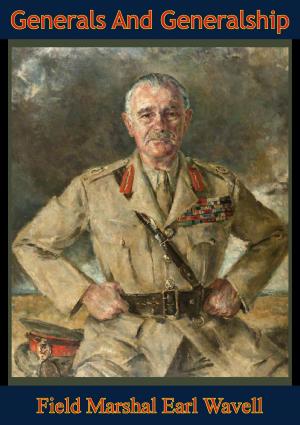The Perfect Sturm: Innovation and the Origins of Blitzkrieg in World War I
Nonfiction, History, Military, World War I, Germany, British| Author: | Captain John F. O’Kane USAF | ISBN: | 9781786250216 |
| Publisher: | Verdun Press | Publication: | November 6, 2015 |
| Imprint: | Verdun Press | Language: | English |
| Author: | Captain John F. O’Kane USAF |
| ISBN: | 9781786250216 |
| Publisher: | Verdun Press |
| Publication: | November 6, 2015 |
| Imprint: | Verdun Press |
| Language: | English |
What are the origins of tactical innovation in large, bureaucratic, military systems? This study will provide a detailed analysis of how the German Army in World War One took advantage of innovative tactical methods developed by their junior and non-commissioned officers (NCO) in the field. While many historians often look at the results of WWI from the perspective of the General officers and politicians (i.e., top-down), they often overlook the important roles played by creative junior officers in revolutionizing the manner in which the German Army fought. These innovations, when supported by senior leadership, led to massive operational and strategic gains for the German Army late in World War One. Moreover, the study will explore how the German Army successfully applied these tactical innovations at the Twelfth Battle of the Isonzo, a.k.a. The Battle of Caporetto in 1917. The result was a crushing Italian defeat. This success encouraged the German leadership to attempt similar offensives in 1918 on the Western Front in France. Initially successful, the offensives later stalled. However, the lessons of these attacks formed the basis for what would become universally known as the Blitzkrieg, or “lighting-war” tactics. These lessons continue to affect how modern militaries employ combined arms in maneuver warfare today. This case study will highlight the importance of “bottom-up” tactical innovation within today’s U.S. military.
What are the origins of tactical innovation in large, bureaucratic, military systems? This study will provide a detailed analysis of how the German Army in World War One took advantage of innovative tactical methods developed by their junior and non-commissioned officers (NCO) in the field. While many historians often look at the results of WWI from the perspective of the General officers and politicians (i.e., top-down), they often overlook the important roles played by creative junior officers in revolutionizing the manner in which the German Army fought. These innovations, when supported by senior leadership, led to massive operational and strategic gains for the German Army late in World War One. Moreover, the study will explore how the German Army successfully applied these tactical innovations at the Twelfth Battle of the Isonzo, a.k.a. The Battle of Caporetto in 1917. The result was a crushing Italian defeat. This success encouraged the German leadership to attempt similar offensives in 1918 on the Western Front in France. Initially successful, the offensives later stalled. However, the lessons of these attacks formed the basis for what would become universally known as the Blitzkrieg, or “lighting-war” tactics. These lessons continue to affect how modern militaries employ combined arms in maneuver warfare today. This case study will highlight the importance of “bottom-up” tactical innovation within today’s U.S. military.










![Cover of the book Helmet For My Pillow [Illustrated Edition] by Captain John F. O’Kane USAF](https://www.kuoky.com/images/2015/november/300x300/9781786252036-cMF2_300x.jpg)




